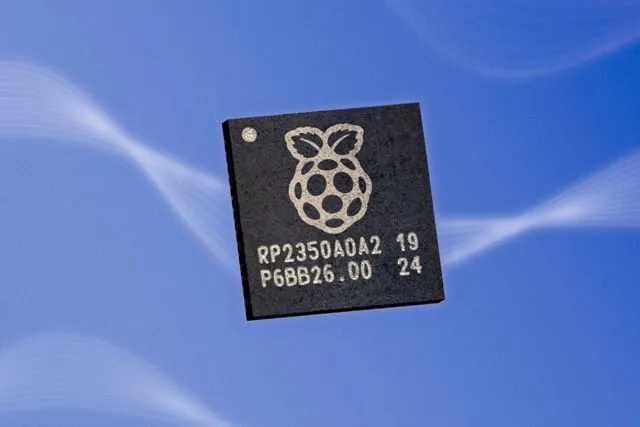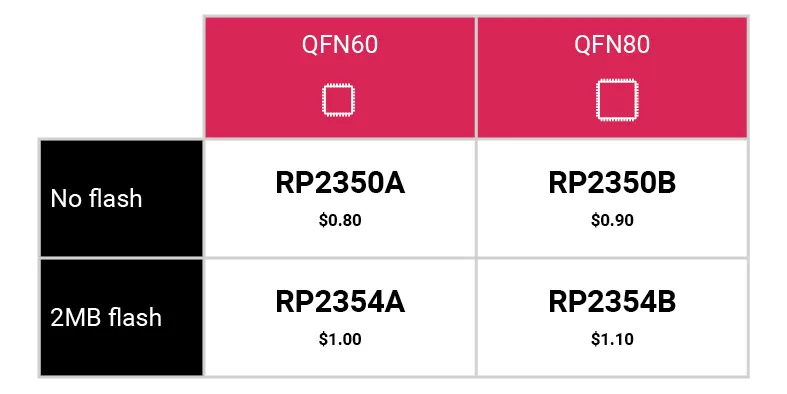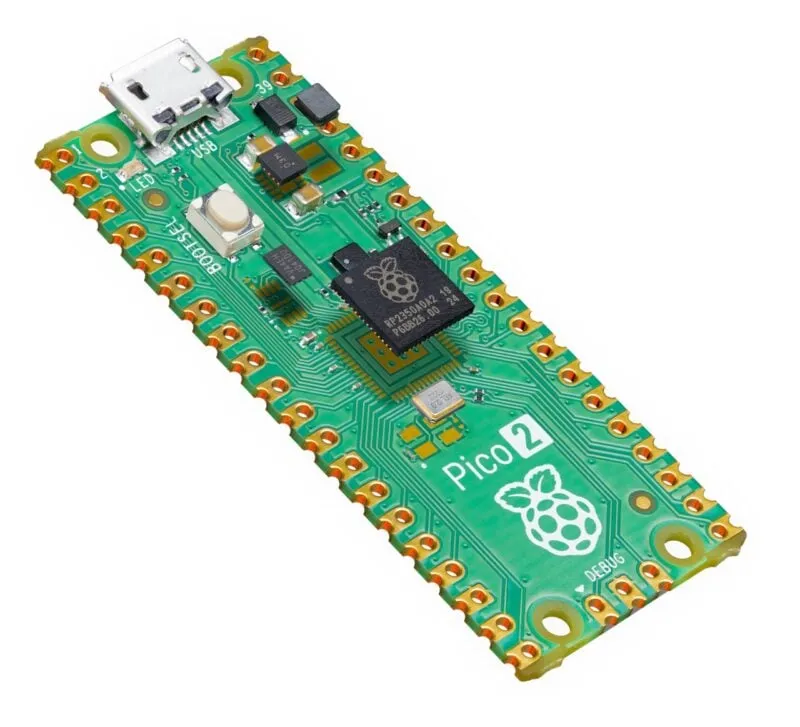The Raspberry Pi Foundation has unveiled its latest microcontroller board, the Raspberry Pi Pico 2. This release marks another milestone in the Foundation’s ongoing mission to make computing and digital skills accessible to everyone. Founded in 2009, the Raspberry Pi Foundation is known for its series of affordable, high-performance computers that have revolutionized education and hobbyist computing.
Background: The Raspberry Pi Pico 1
The original Raspberry Pi Pico was launched in January 2021 and quickly became a favorite among DIY enthusiasts and educators. Powered by the RP2040 chip—a custom-designed, dual-core ARM Cortex-M0+ microcontroller—Pico 1 featured 264KB of SRAM, 2MB of onboard flash memory, and a range of I/O options, making it a versatile and cost-effective choice for a wide range of projects.
RP2040 Chip Specs:
- Processor: Dual-core ARM Cortex-M0+
- Clock Speed: 133 MHz
- RAM: 264KB
- Flash Memory: 2MB
- GPIO Pins: 26
- Connectivity: USB 1.1, UART, I2C, SPI, PWM
Introducing the New RP2350 Chip of the Raspberry Pi Pico 2
The Raspberry Pi Pico 2 is powered by the newly developed RP2350 chip, which brings significant enhancements over its predecessor. The RP2350 features a more powerful ARM Cortex-M4 processor, offering better performance for more demanding applications. Additionally, the RP2350 includes expanded memory, improved I/O capabilities, and multiple configurations to cater to different needs.
RP2350 Chip Specs:
- Processor: ARM Cortex-M4
- Clock Speed: Up to 200 MHz
- RAM: 512KB (expandable)
- Flash Memory: 4MB
- GPIO Pins: 30+
- Connectivity: USB 2.0, UART, I2C, SPI, PWM, ADC, DAC
The RP2350 chip is available in several configurations, with options for extended memory and additional connectivity features, allowing developers to choose the best fit for their projects.


Software and Documentation
The Raspberry Pi Pico 2 is supported by a rich ecosystem of software tools and documentation. Developers can program the Pico 2 using C/C++, MicroPython, and even CircuitPython, making it accessible to both beginners and advanced users. The official Raspberry Pi documentation provides comprehensive guides on setup, programming, and interfacing with other hardware components.
Some of the popular software tools used with Pico 2 include:
- Thonny IDE: A simple Python IDE that is perfect for beginners.
- Visual Studio Code: A powerful editor with extensions for Pico development.
- Arduino IDE: Offers support for RP2040 boards, including the Pico 2.
Industry Partners and Adoption
Several industry partners have already adopted the RP2350 chip for use in their products, ensuring a growing ecosystem around the Pico 2. Companies like Adafruit, SparkFun, and Arduino are among the key partners, providing compatible hardware modules, shields, and software libraries to enhance the capabilities of the Pico 2.
Conclusion
The Raspberry Pi Pico 2 builds on the success of its predecessor with significant improvements in processing power, memory, and connectivity. Whether you are an educator, hobbyist, or professional developer, the Pico 2 offers a versatile and powerful platform for all kinds of projects. With robust software support and a growing community of users, the Pico 2 is set to become a staple in the world of microcontrollers.
For more details on the Raspberry Pi Pico 2 and to get started with your projects, visit the official Raspberry Pi website.

